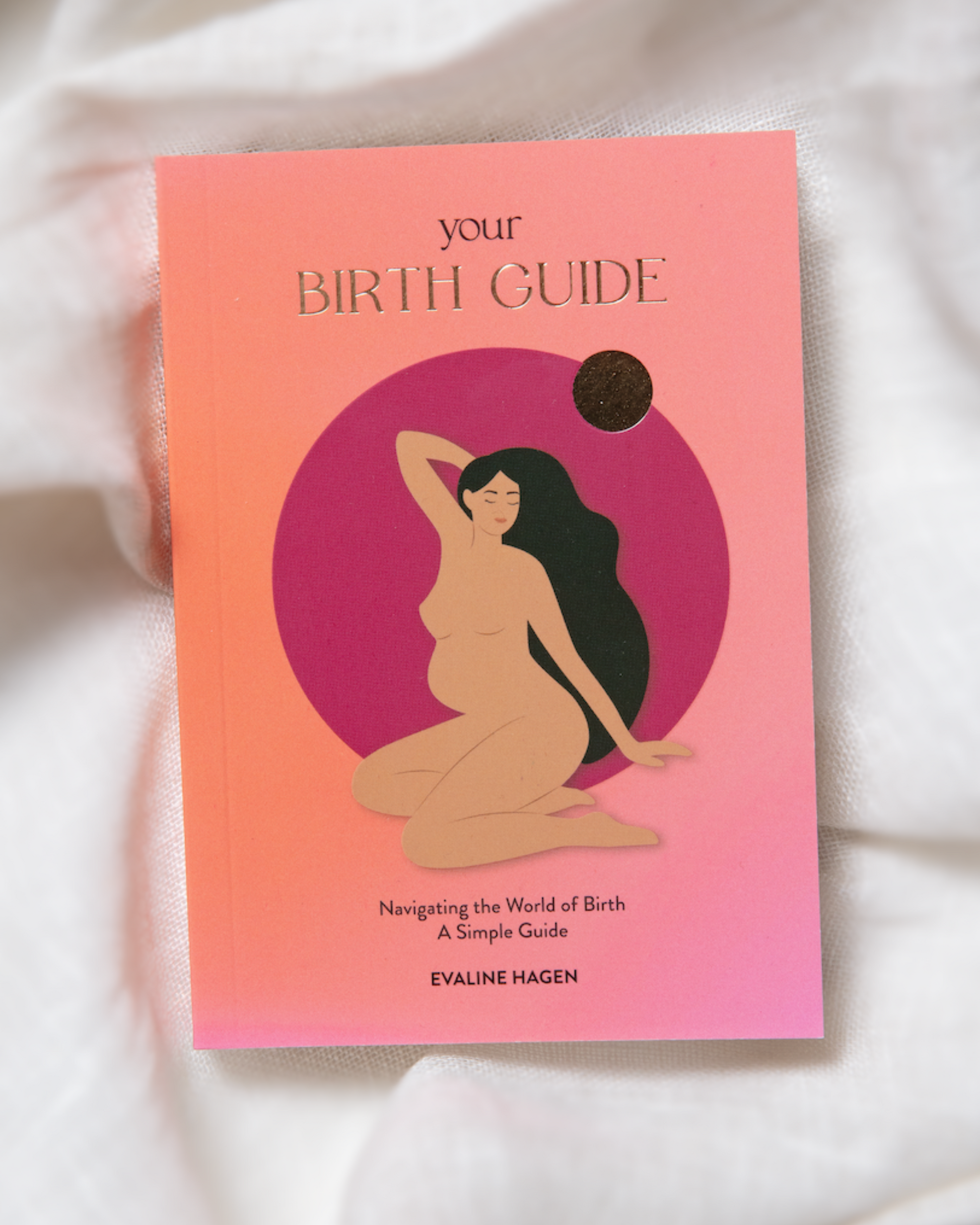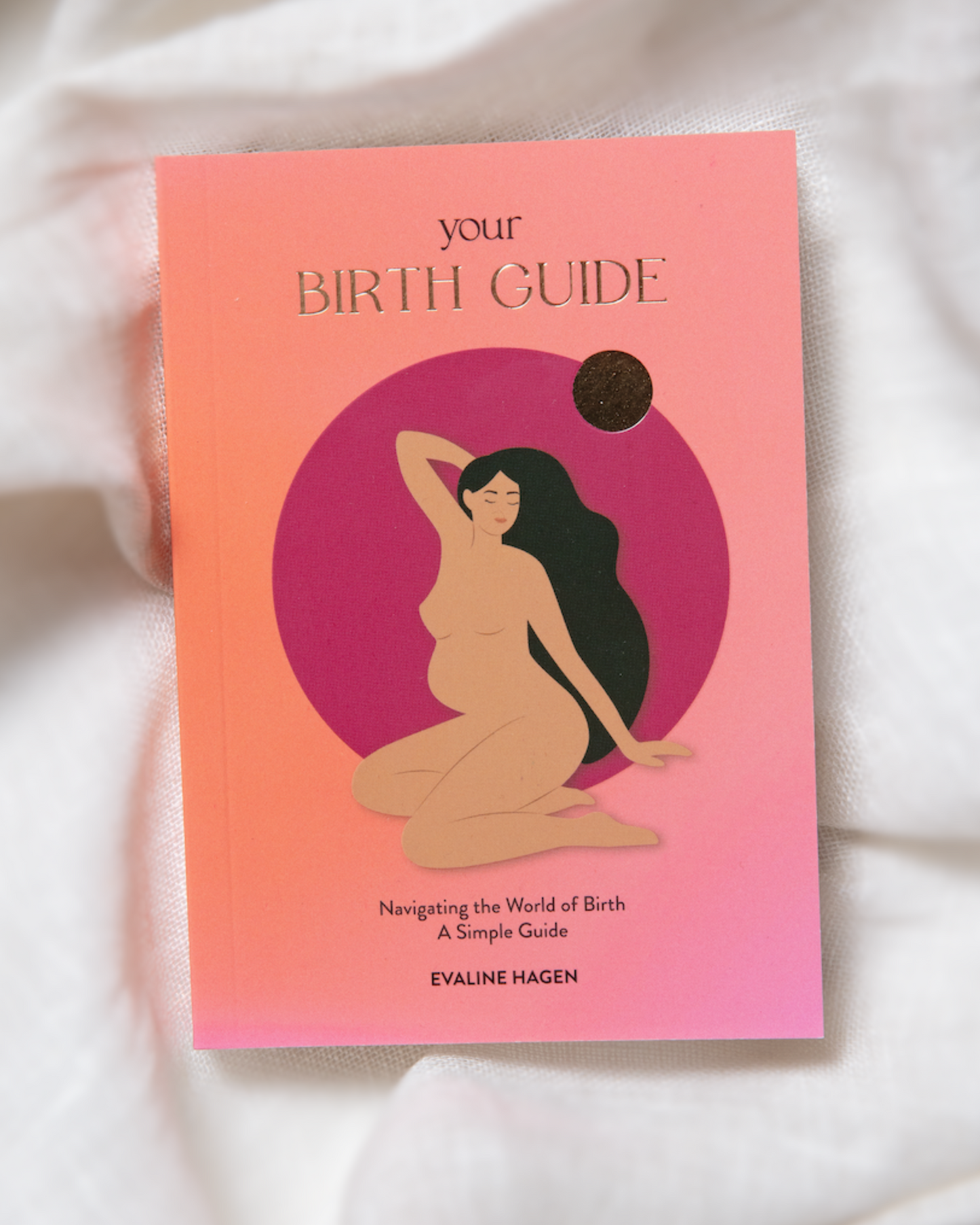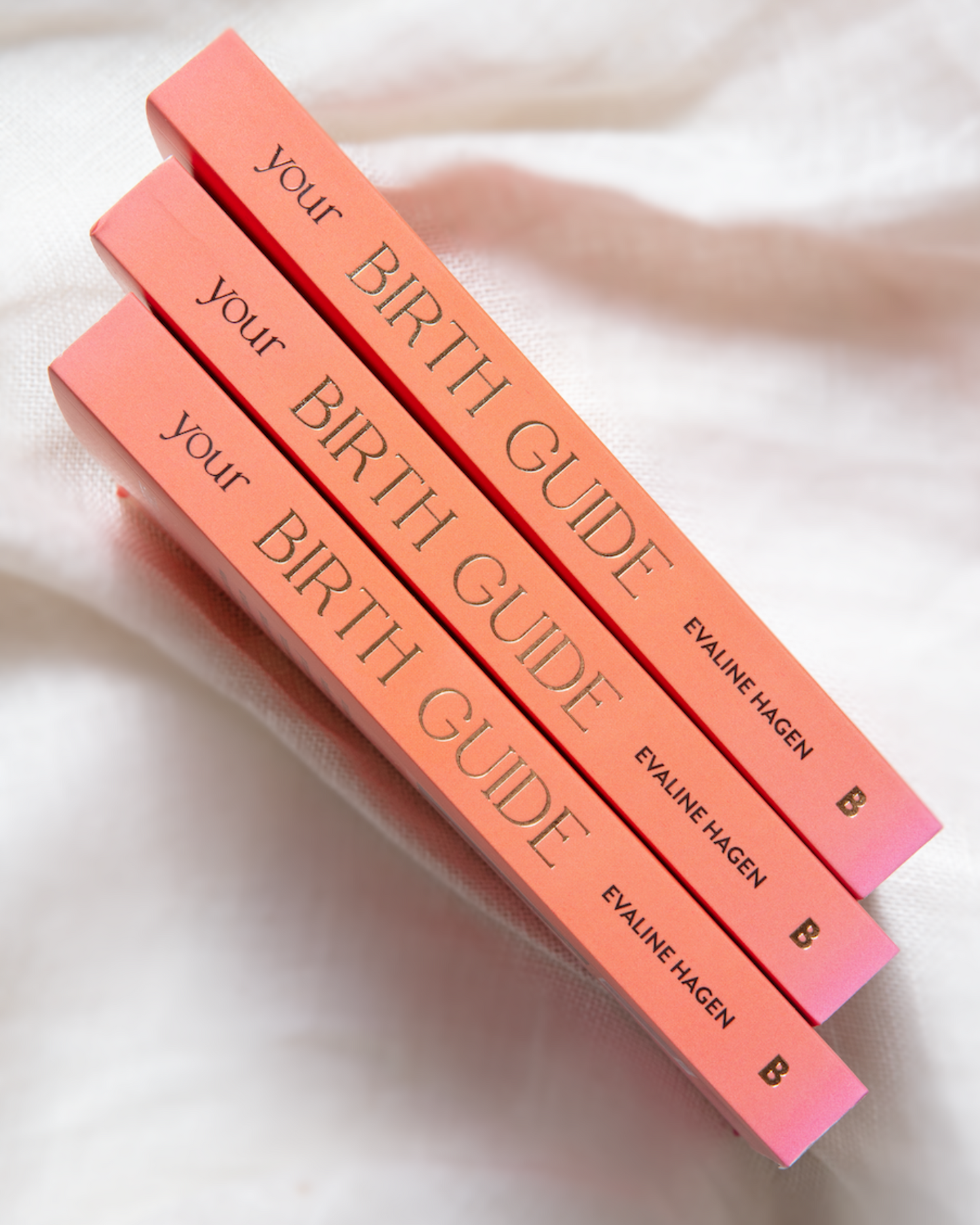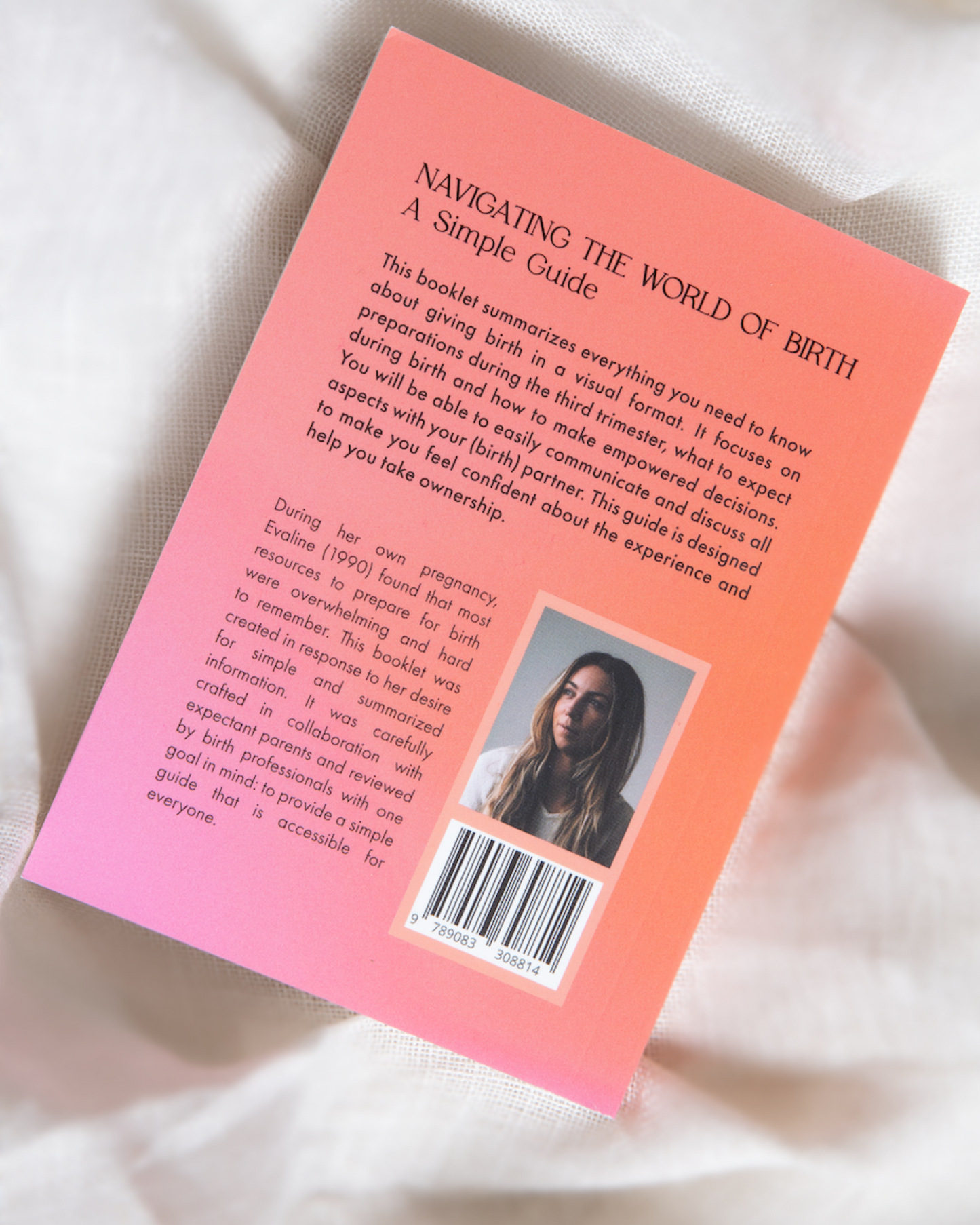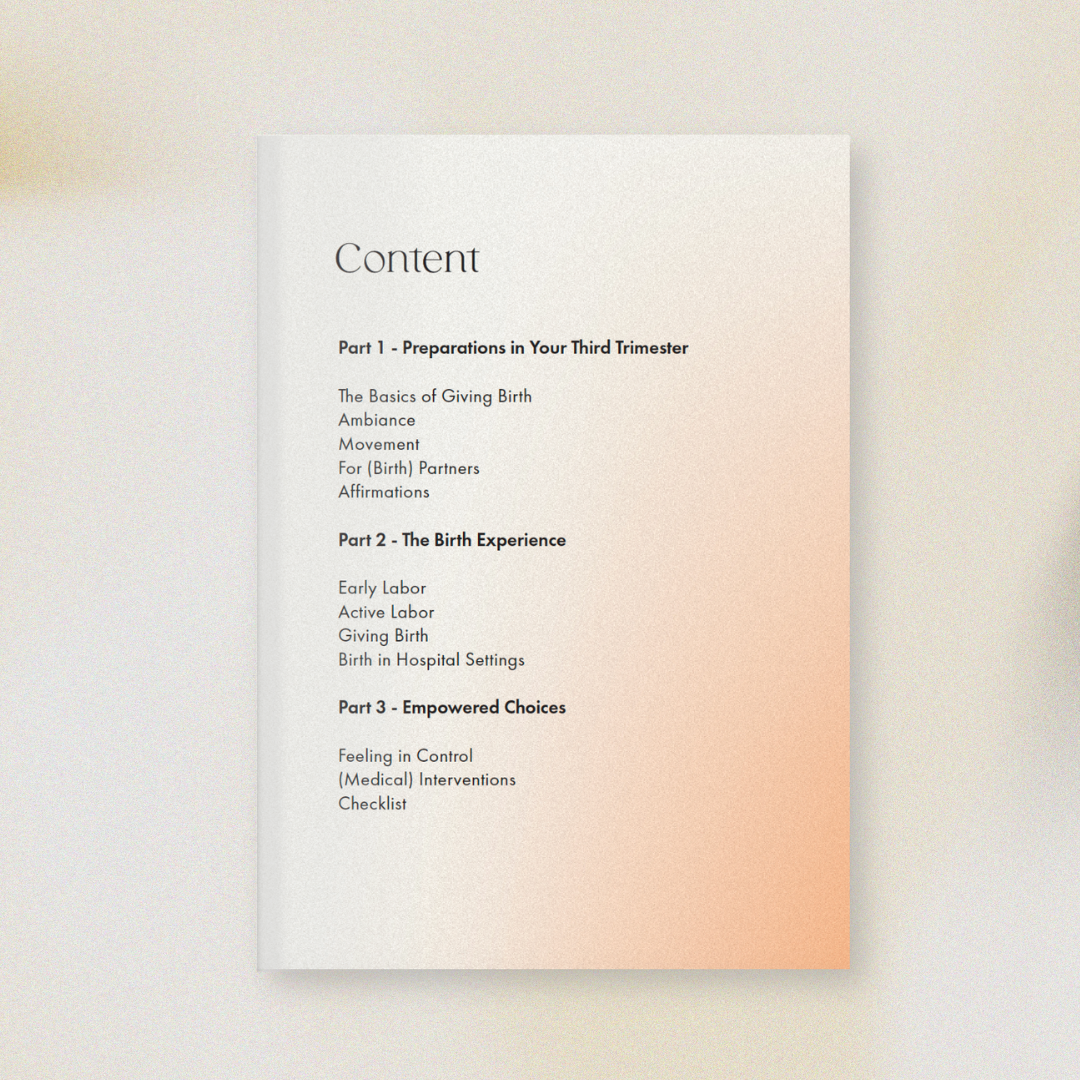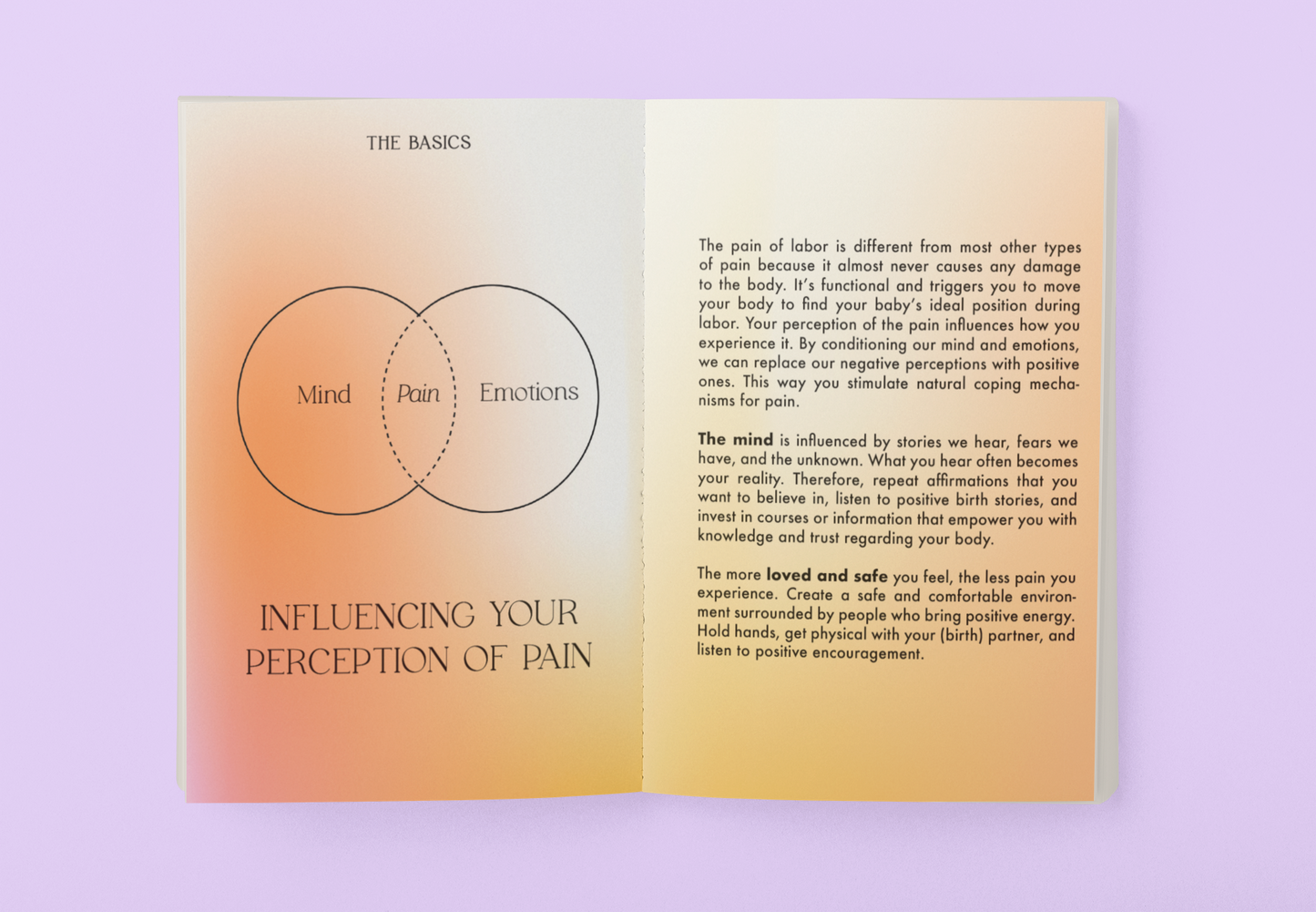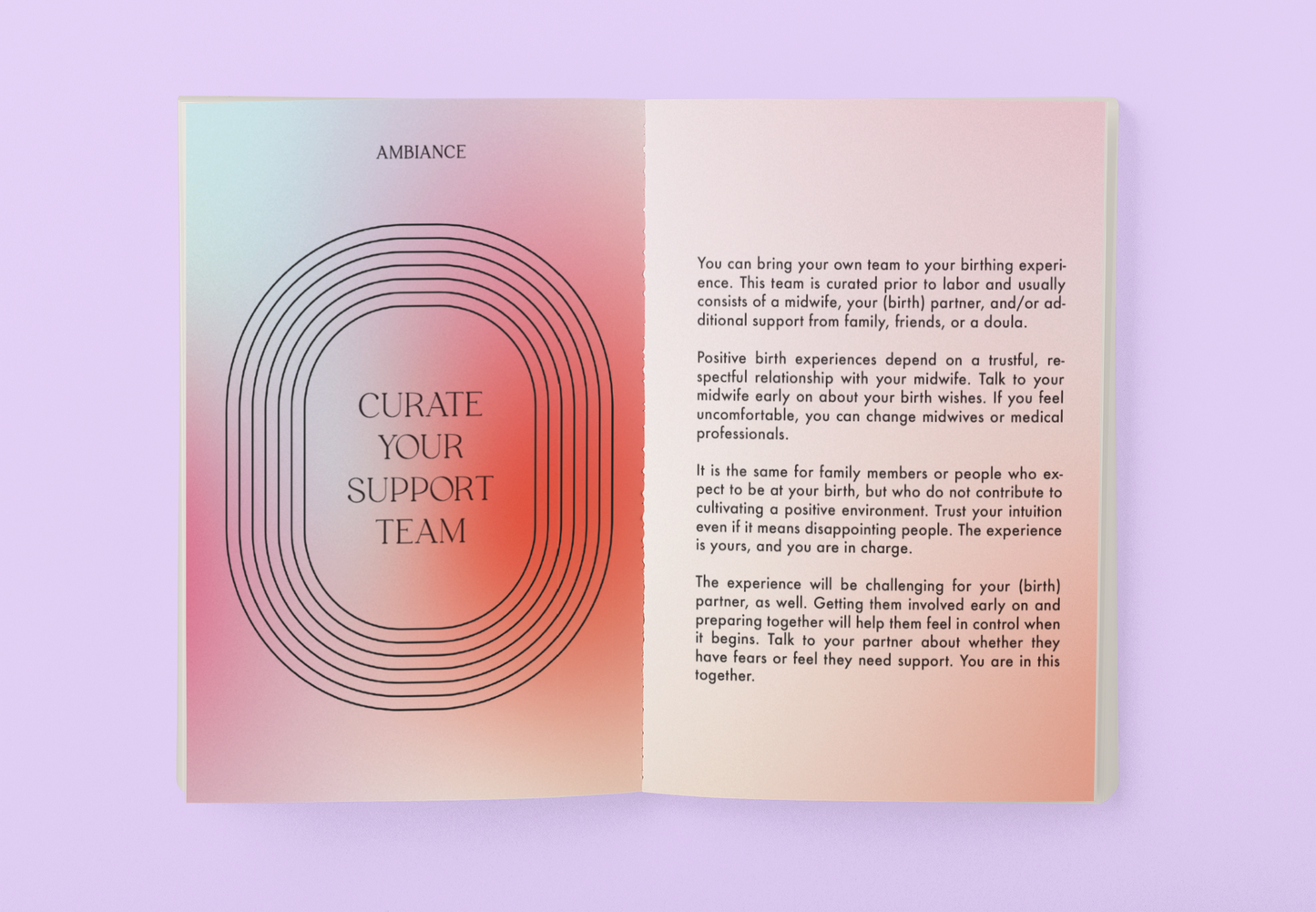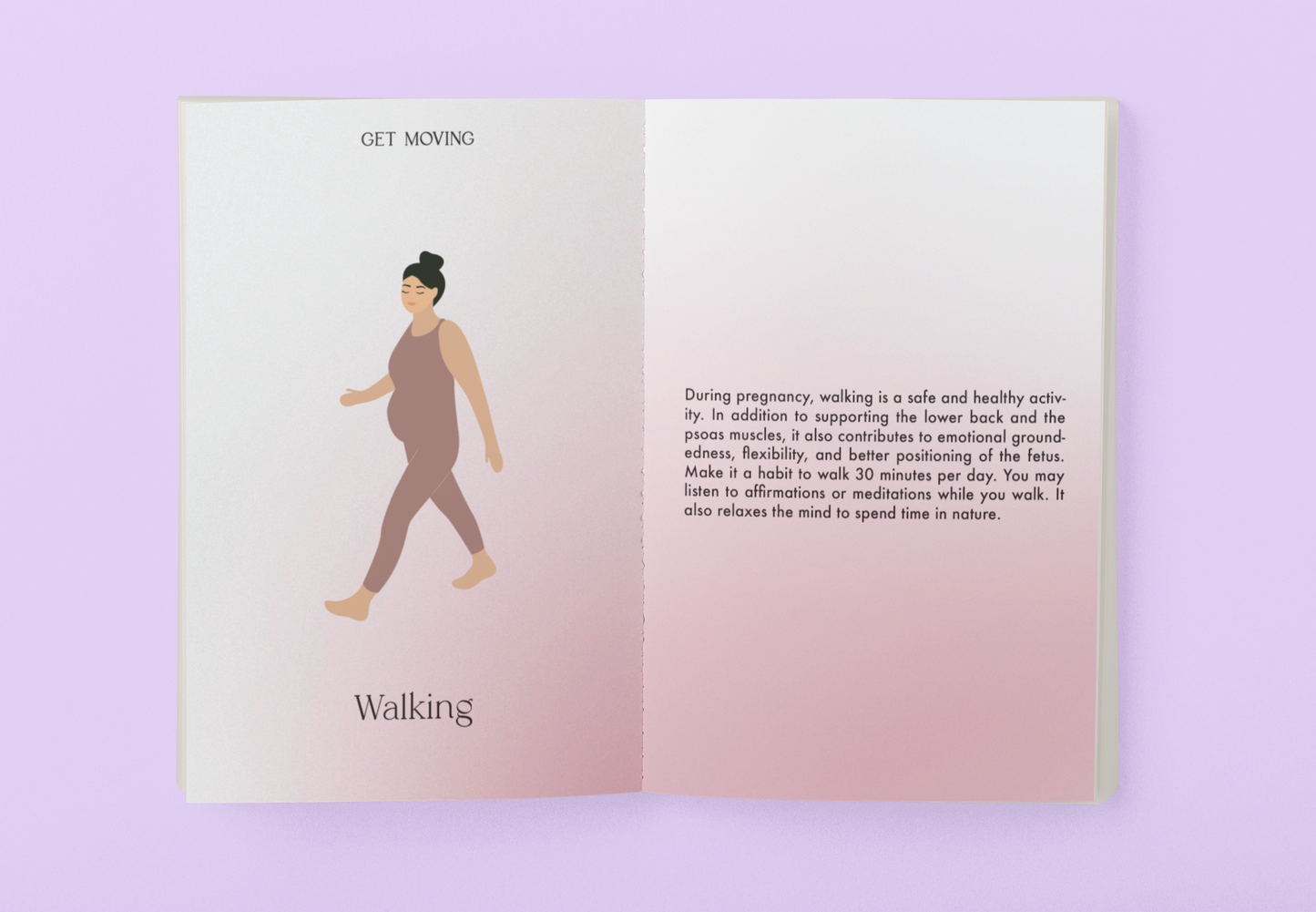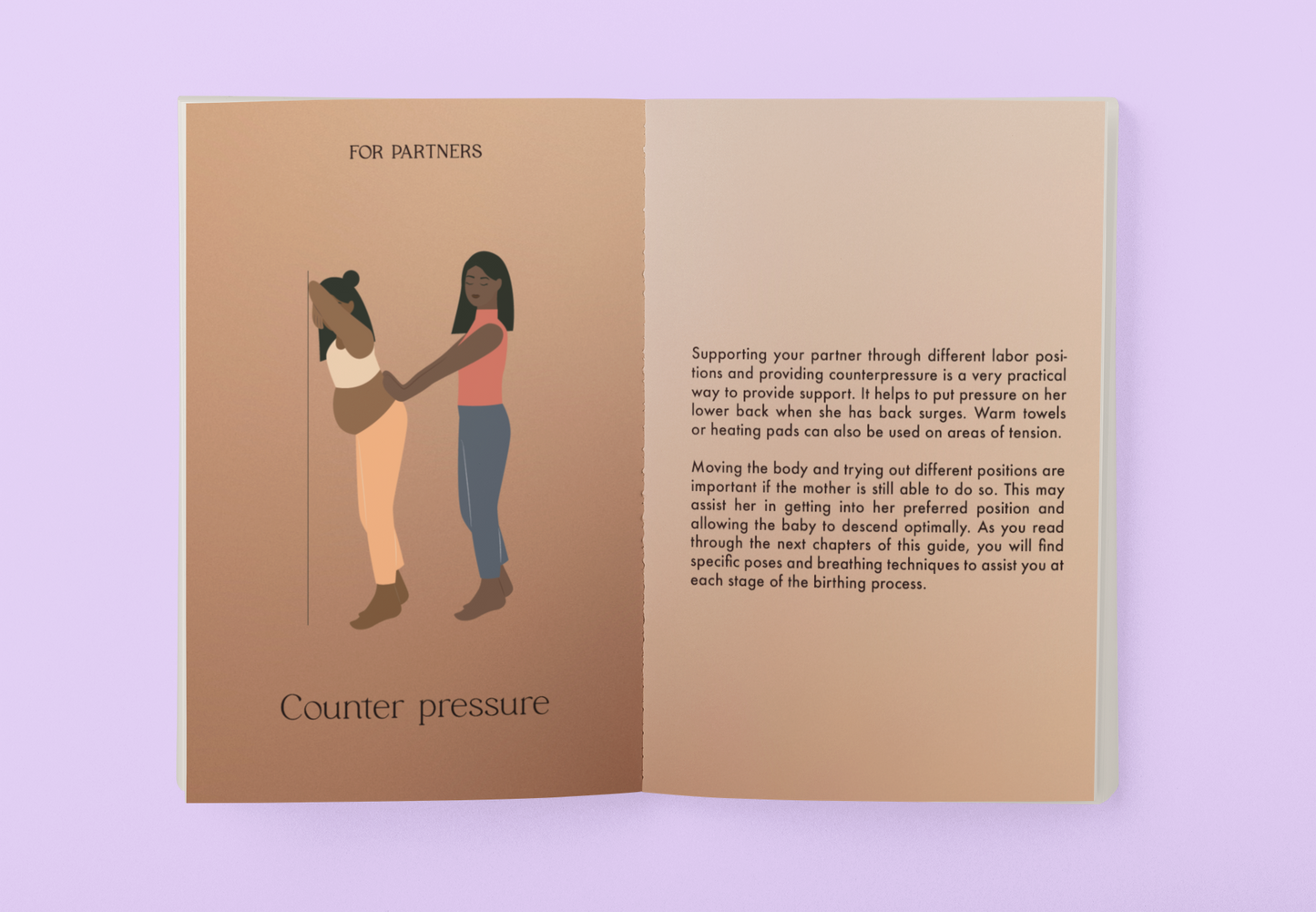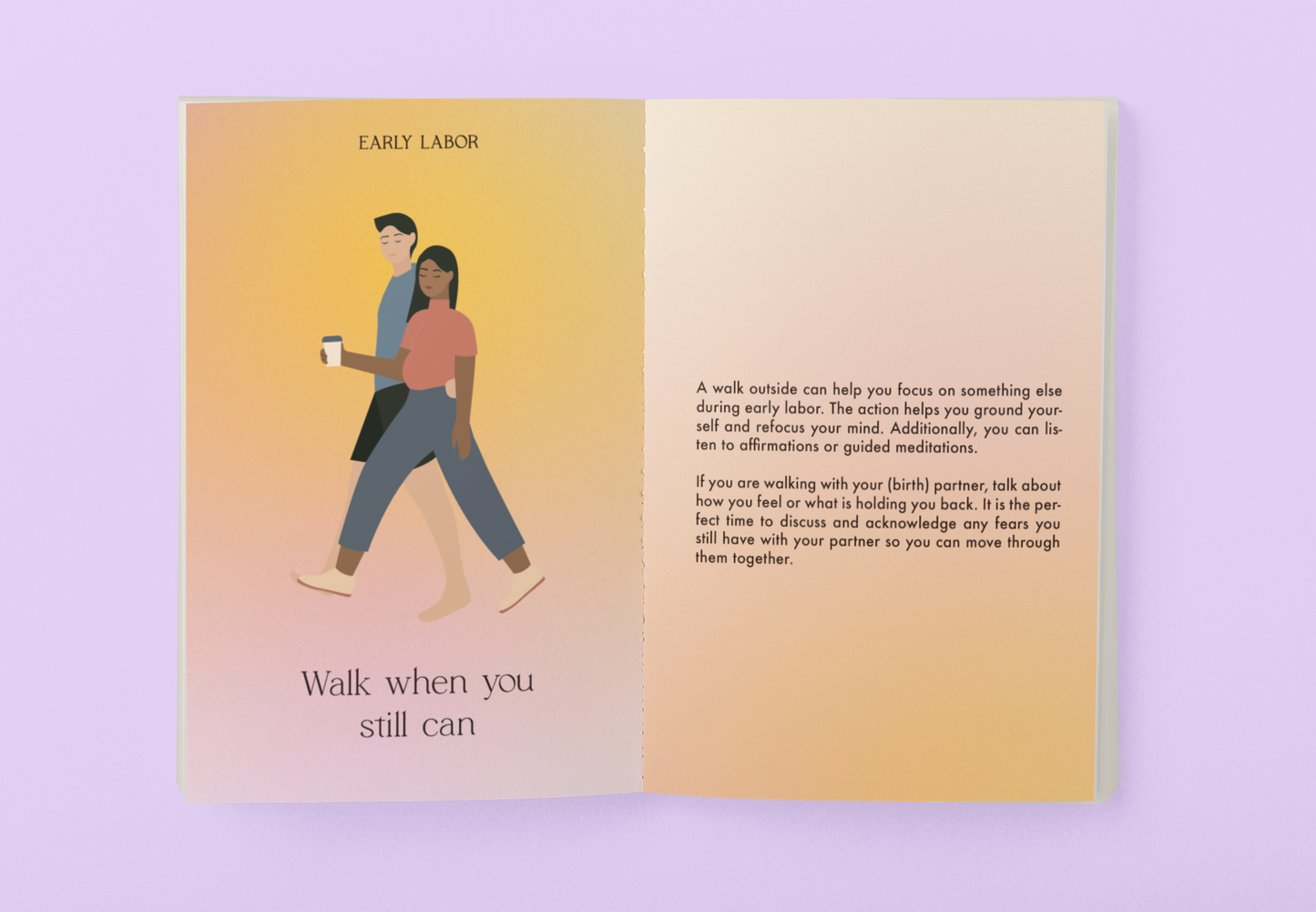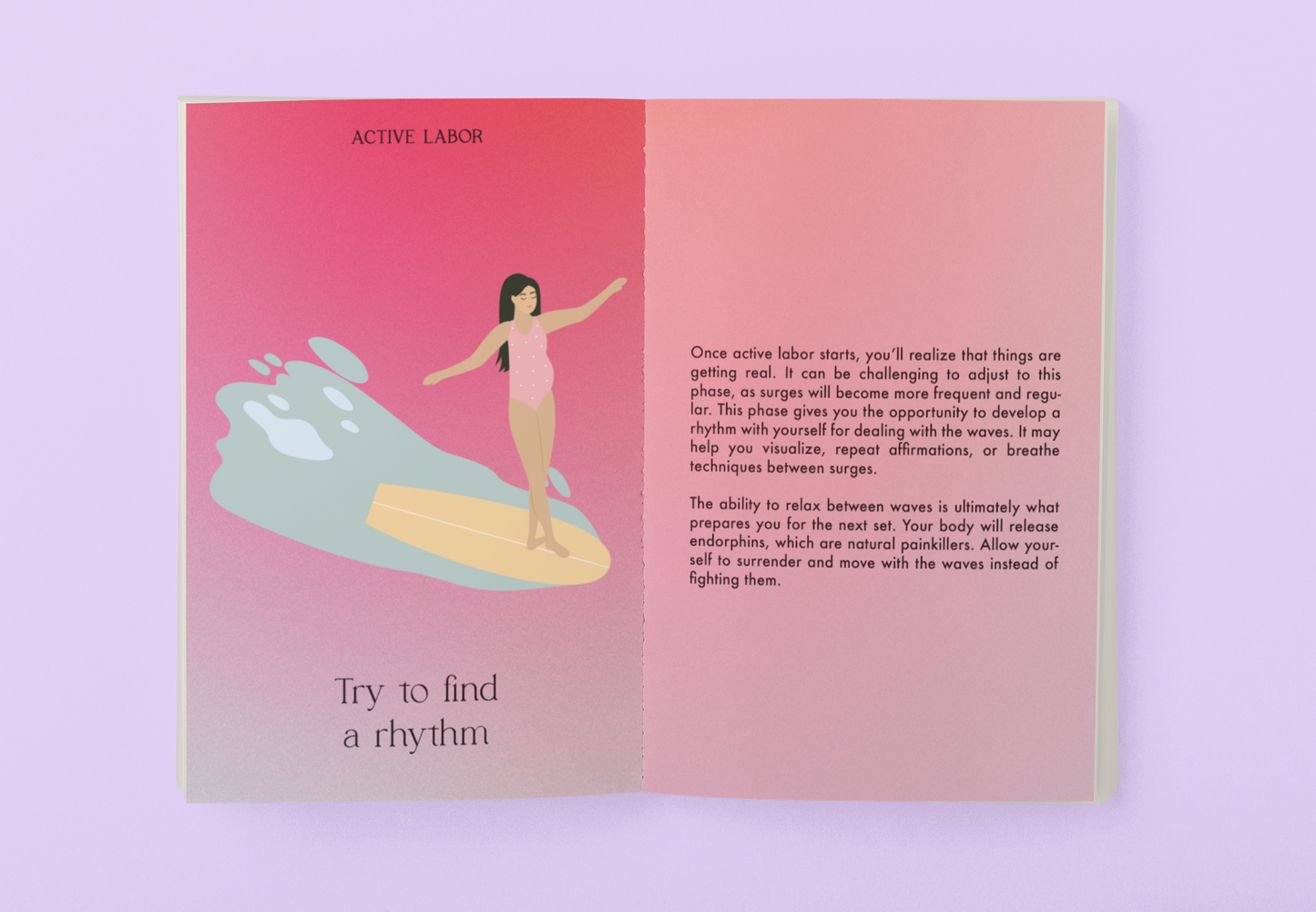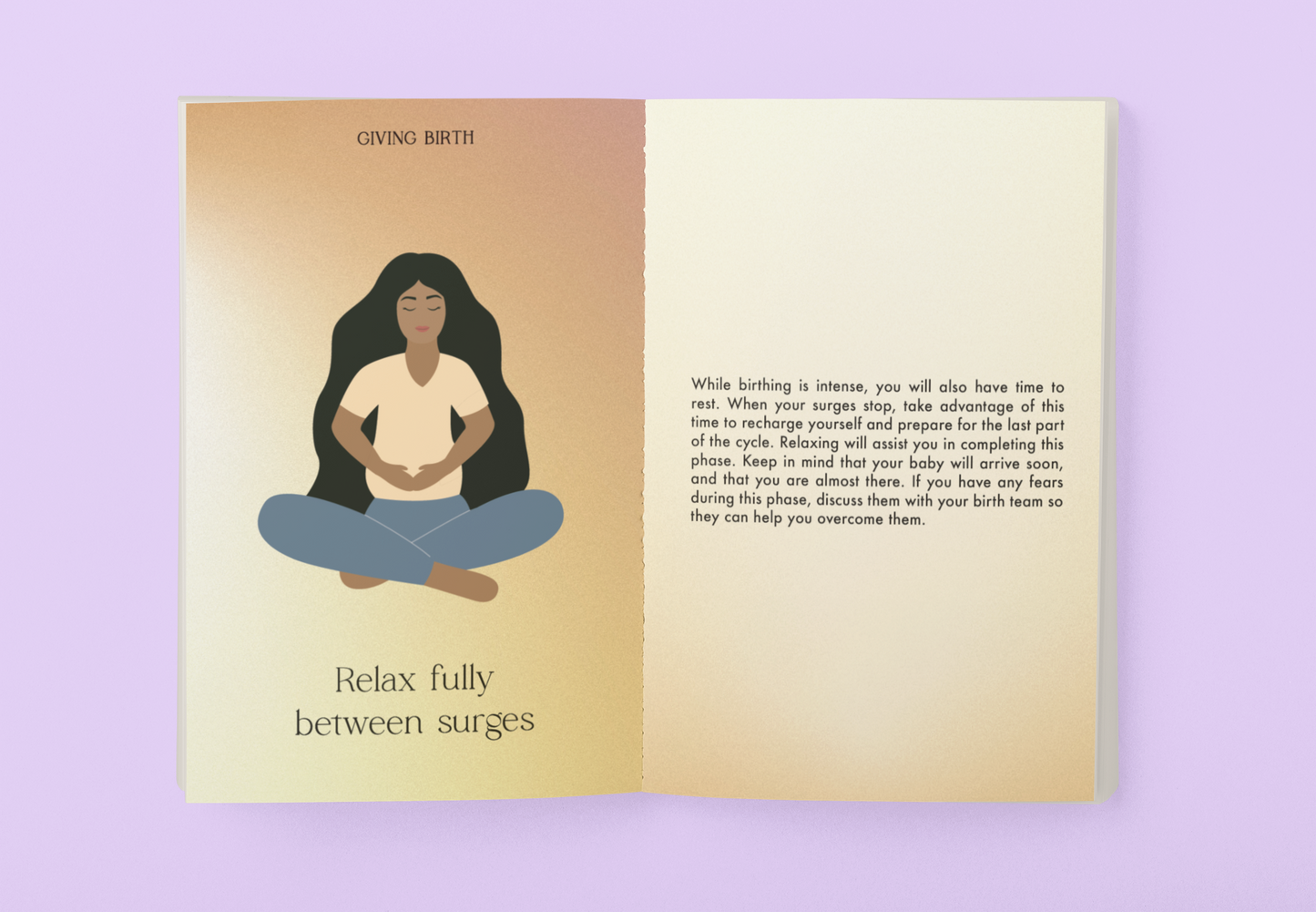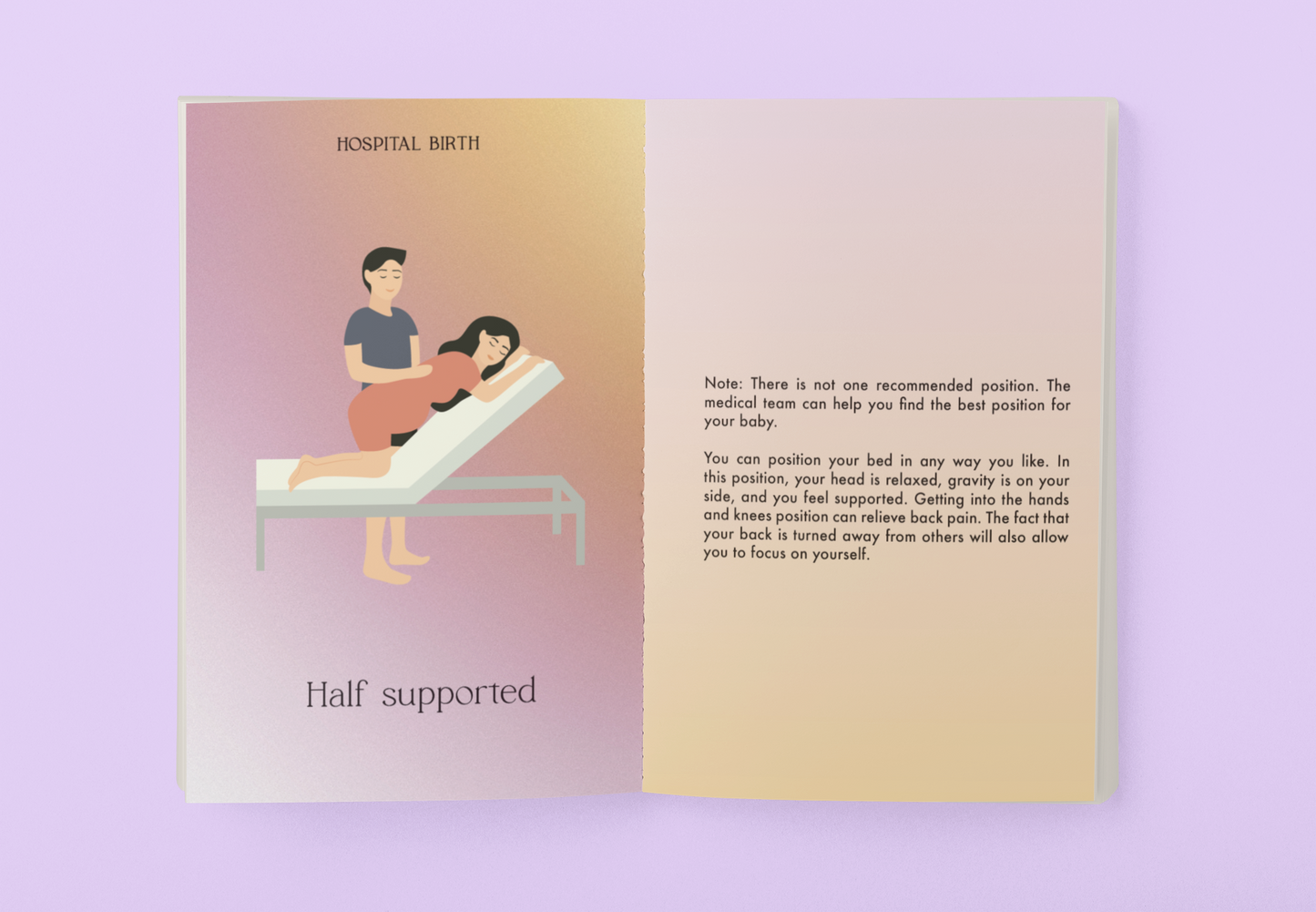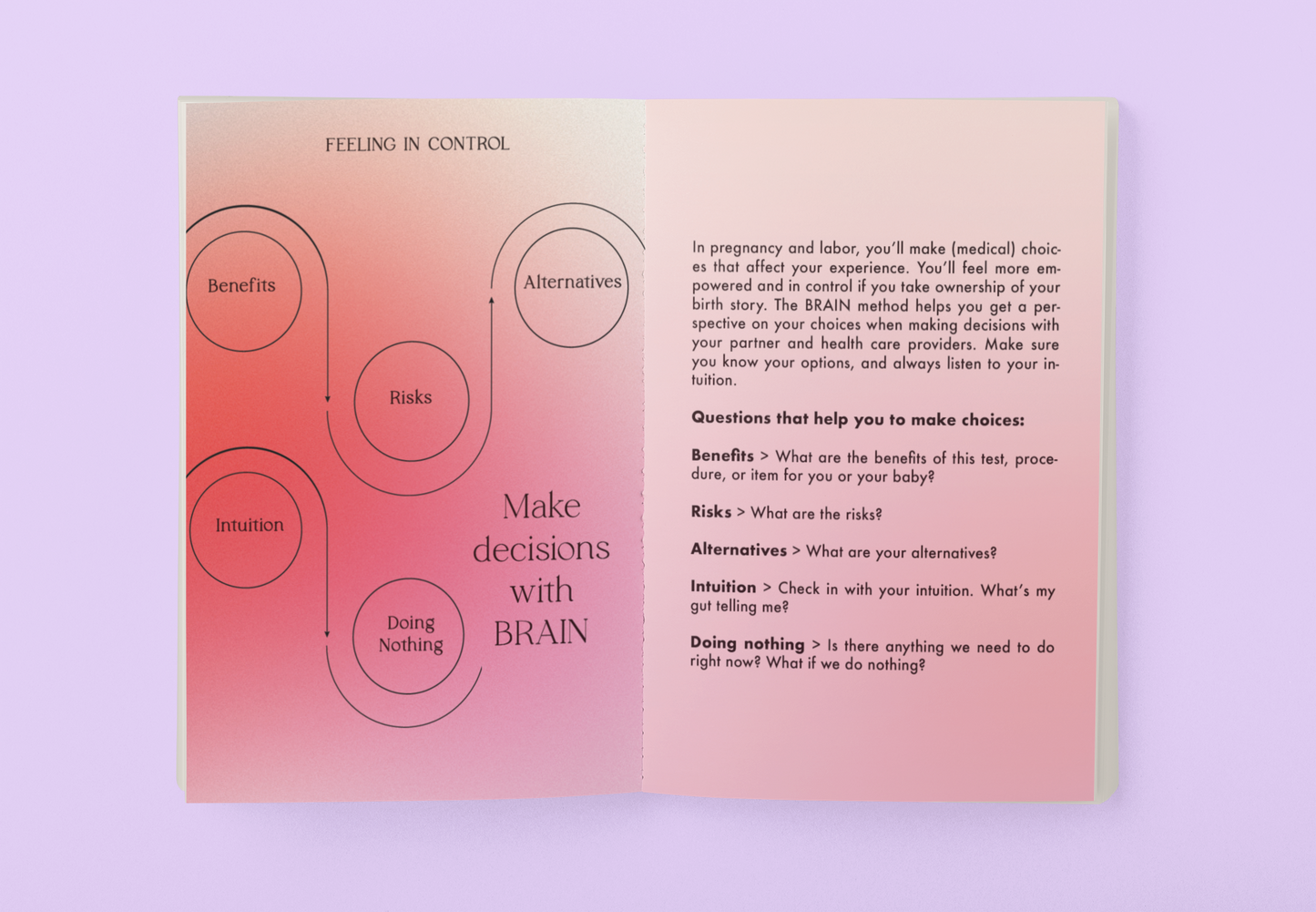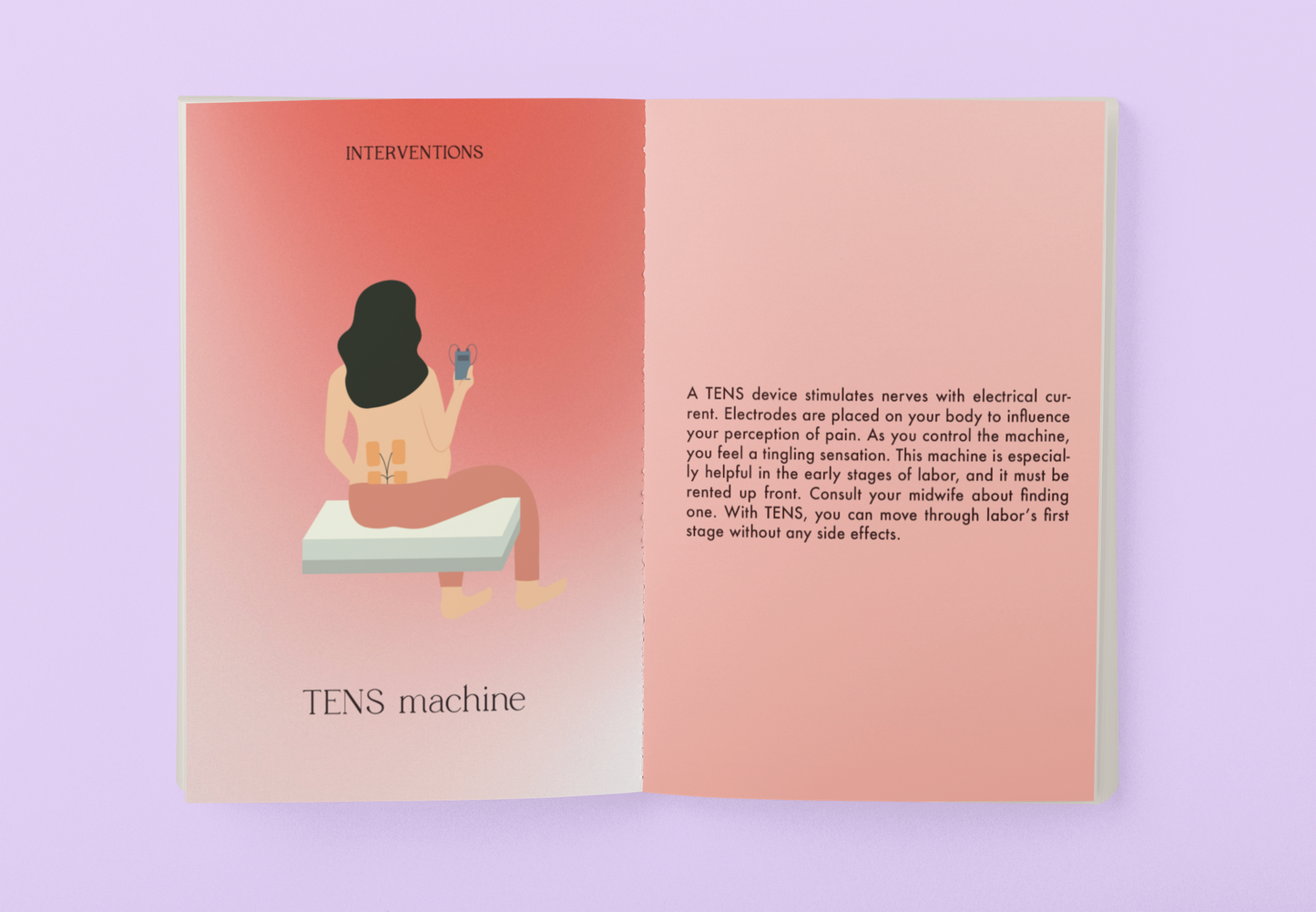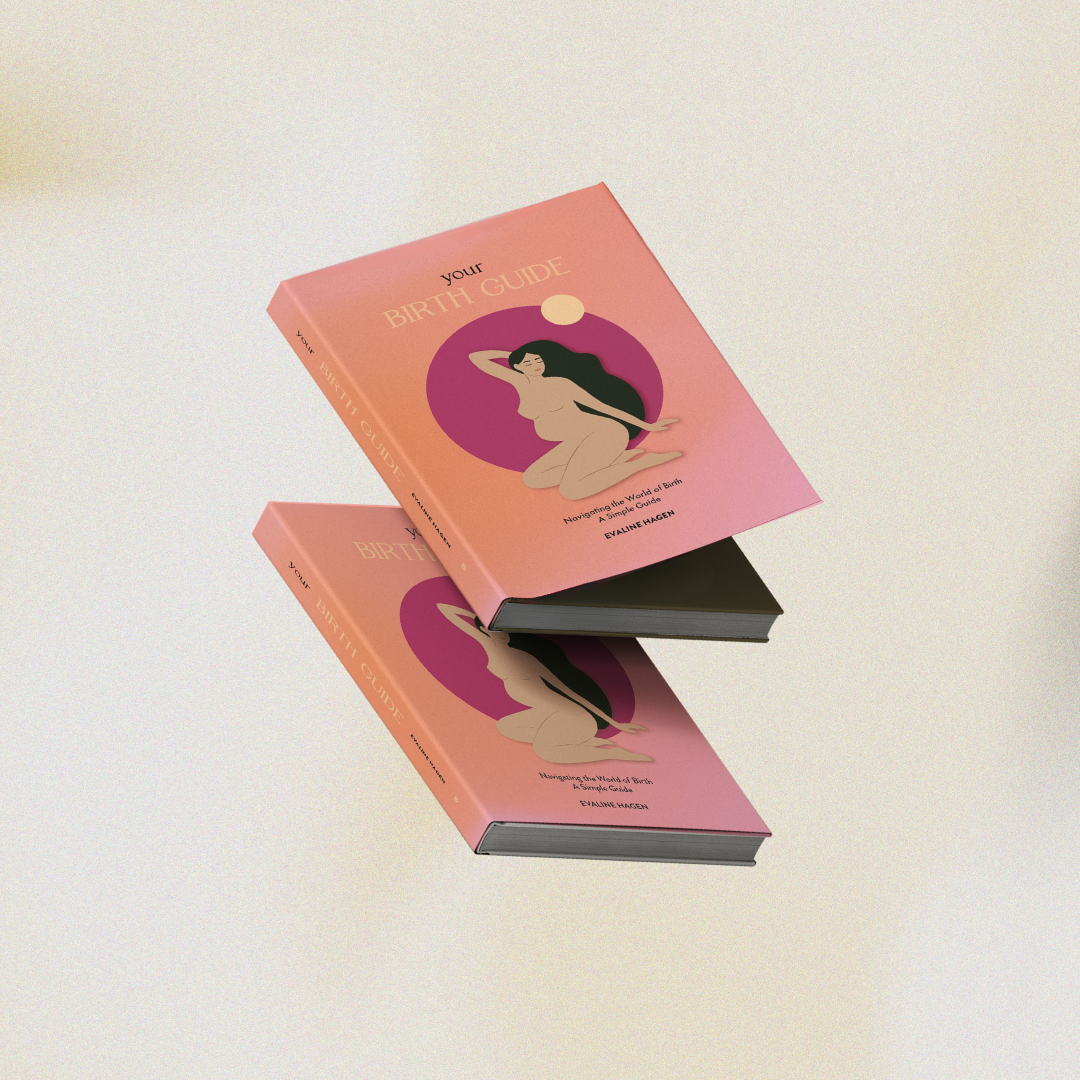Birth is a physiological process that happens in stages; Early Labor, Active Labor and Giving Birth. The early stage takes time, sometimes even pausing for a few days. Be patient with yourself. The body will keep moving when it's ready.
Movement helps to align your baby for birth and allows you to find comfort through different positions. Your baby's position will be less optimal if you lay flat on your back. What might feel comfortable on paper, will be different when your birth experience actually starts; so adapt your position according to your body's needs. Your midwife or medical team can help you find the optimal position for your situation.
Here are some tips & positions that support the different stages:
PHASE 1 - EARLY LABOR
During early labor, your cervix is thinning and the baby is aligned for optimal birth. You will experience irregular surges. Maintain your energy during this phase and be patient.
1. WARM WATER HELPS YOU MOVE THROUGH SURGES

Being in water is calming and relaxing, and it makes it easier to enter a meditative state. In the shower, you can sit on a chair to support yourself. In most cases, a warm shower helps you move through surges, making contractions more manageable. You feel less fear and stress, and you can move and change positions more easily. By standing up in the early stages of labor, you optimize the baby's position.
2. CLIMBING STAIRS & USING GRAVITY

Positioning the baby optimally is the main goal of this stage of labor. By climbing stairs, the baby can drop further and push on the cervix. Gravity can be a great tool for helping your body through the birthing process.
3. WALK WHEN YOU STILL CAN

A walk outside can help you focus on something else during early labor. The action helps you ground yourself and refocus your mind. Additionally, you can listen to affirmations or guided meditations. If you are walking with your (birth) partner, talk about how you feel or what is holding you back. It is the perfect time to discuss and acknowledge any fears you still have with your partner so you can move through them together.
4. BOUNCING SURGES AWAY

The sitting ball is a comfortable position if you want to move and rest at the same time. Bounce or roll on your ball, and use a rhythm to help you enter a meditative state. In the end, it is important to see which position feels and works best for you. Every position is a good one, as long as you listen to your body.
PHASE 2 ACTIVE LABOR
During the active phase, your cervix will dilate approximately 1 cm an hour to eventually 10cm and your uterus muscles will move upwards. Your surges will regulate and become more powerful. The purpose of this phase is to get active, both by breathing and by moving. It requires surrendering to the process and finding your own rhythm. Adapt your position according to your body's needs.
5. SQUATS

By squatting, you give the baby more room in the pelvis to get to the birth canal. You might feel tired in this position, so use your partner or a chair for support.
-
-
6. SITTING ON A CHAIR OR TOILET

Sitting can relieve pressure on your pelvis and is a good way to rest. Sitting on the toilet is a good way to relax the perineum since you are used to relaxing these muscles when you go to the bathroom. It might also ease some fears about defecating during labor. This is, by the way, very normal. When sitting on a toilet, you can relax and enjoy some privacy at the same time.
7. HANGING OVER A BALL

Birthing balls provide support while you bounce and move through contractions. In addition to relieving back pressure, they also promote dilation. If you wish to move your hips, you can experiment with different positions while sitting. You can do this by hanging from the ball, leaning against it, or draping your upper body over it while kneeling.
8. HANDS & KNEES POINTING OUTWARDS

The hands-and-knees position can be modified with your bum up or by supporting yourself with your arms. This position is helpful for opening the pelvis and relieving spinal pressure. Your knees should point slightly outwards for optimal hip opening.
9. STANDING

By maintaining an upright labor position, you can take advantage of gravity during labor. Your partner can assist you in standing or walking. Positions that are upright relieve back pain and encourage the baby to move deeper into the birth canal.
PHASE 3 GIVING BIRTH
The last phase is giving birth to your baby and its placenta. As your baby moves from the uterus into the birth canal, it makes its way out into the world. With regular contractions, your uterus muscles support pushing the baby out.
Since the baby has to make a small turn in the birth canal, lying on your back is not the ideal position. This is because you will need to exert a lot of effort to assist the baby through it. Allow gravity and the positioning of your own body to help your baby be born by using different positions.
10. IN BED, ON YOUR SIDE

Consider lying on your side if you are going to lay in bed. When you need to relax during contractions, lying on your side is a great position. Side positions can help move the baby into a ready position. To support your upper leg, you can use a peanut-shaped birthing ball or get your partner's help.
11. IN A BATH

The warmth of water eases and relaxes your muscles and mind. There is a lower rate of tissue tearing during waterbirth, and fewer interventions are required. You can try different positions in the water for birth, such as squatting or hanging over the side. When your baby is born, you might choose to get out of the water or let your baby be born in the water. This is also possible in a hospital setting. Discuss the possibilities with your medical professionals.
12. SQUATTING WITH SUPPORT

A squat is a popular birthing position because it opens your hips and allows for gravity to be on your side. Ask your birth team if your baby is positioned correctly for squatting. If you are in this position, you may find it tiring, so it is helpful to have your partner's support. As you squat against your partner, you also stimulate feelings of relaxation and safety.
13. ON HANDS & KNEES POINTING INWARD

Kneeling allows for easy relaxation between contractions, which makes it a comfortable position. Back pressure is eased and tension is relieved in this position. If you point your knees inward, your hips will be able to open up more space for your baby.
14. BIRTH STOOL

Birth stools are similar to toilet seats, so you can push while sitting in a familiar position. The upright position allows gravity to assist you. Lean against your partner for rest between contractions. In this position, the baby can move further down and the mother's back can be relieved of stress.
DISCLAIMER
The purpose of Birth Guides is to serve as a directory for exploring topics around giving birth, not as a source of medical advice. Always check with your medical team or midwife what is most appropriate for your situation. Birth Guides can not be held responsible for potential inaccuracies or incompleteness in this article. We are always looking to optimise our content > feedback@birthguides.com
